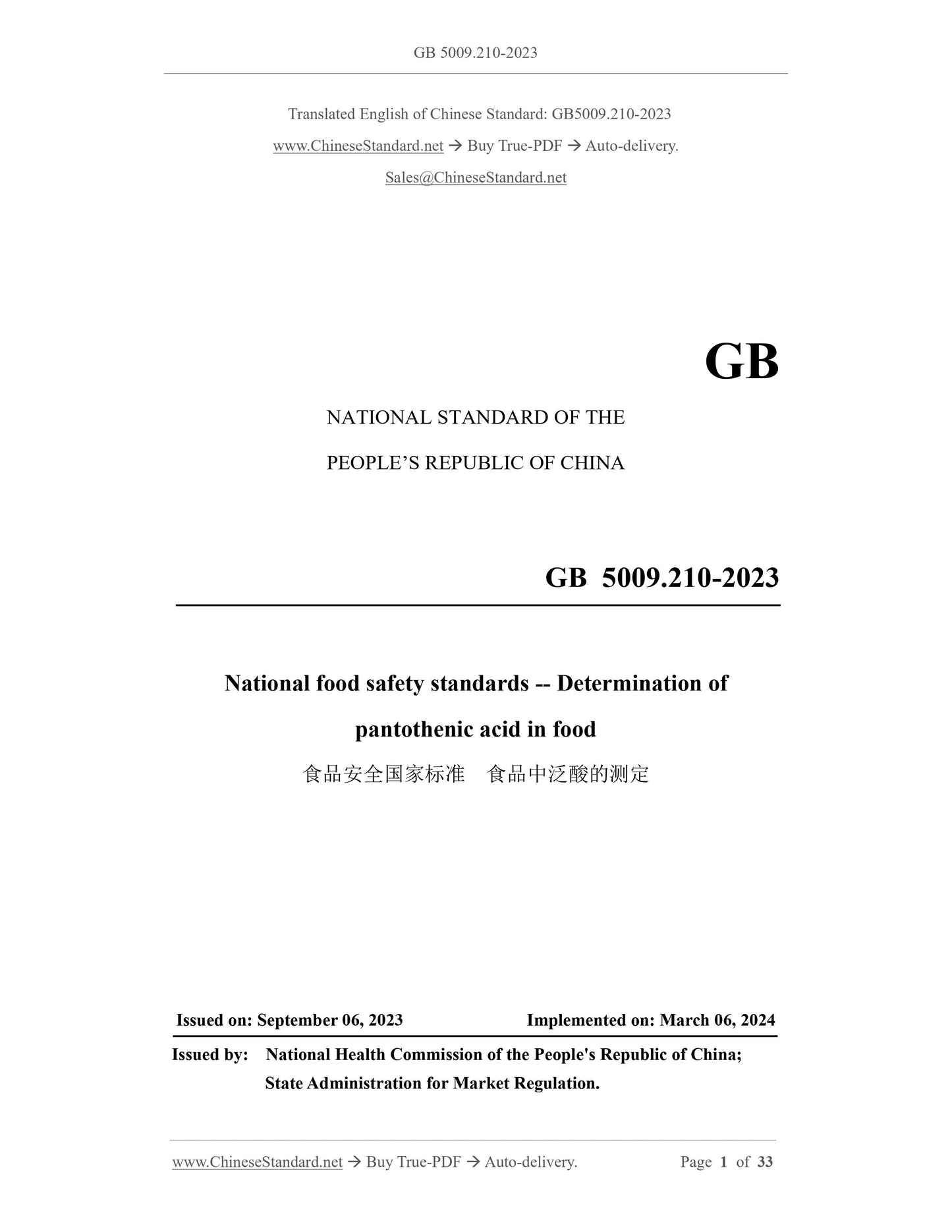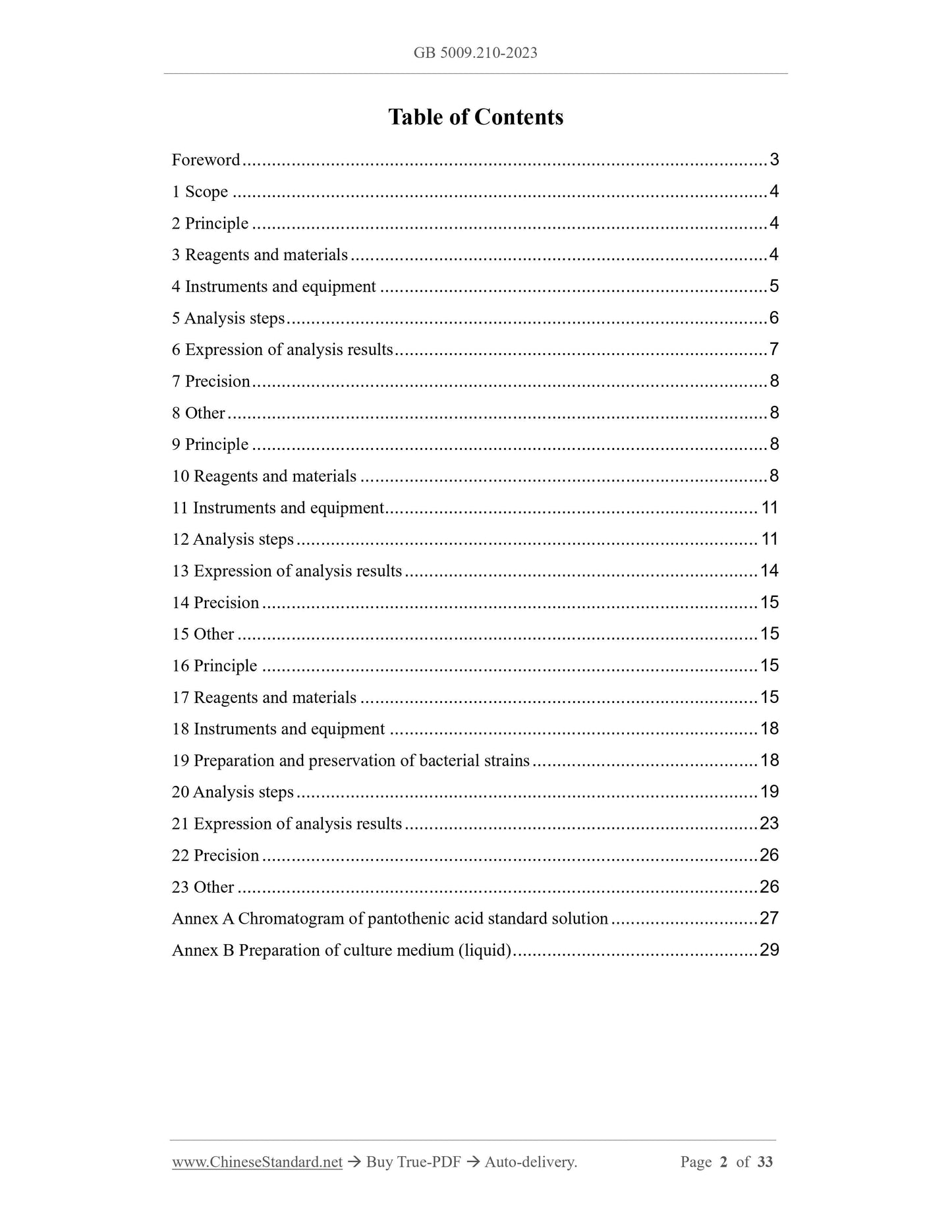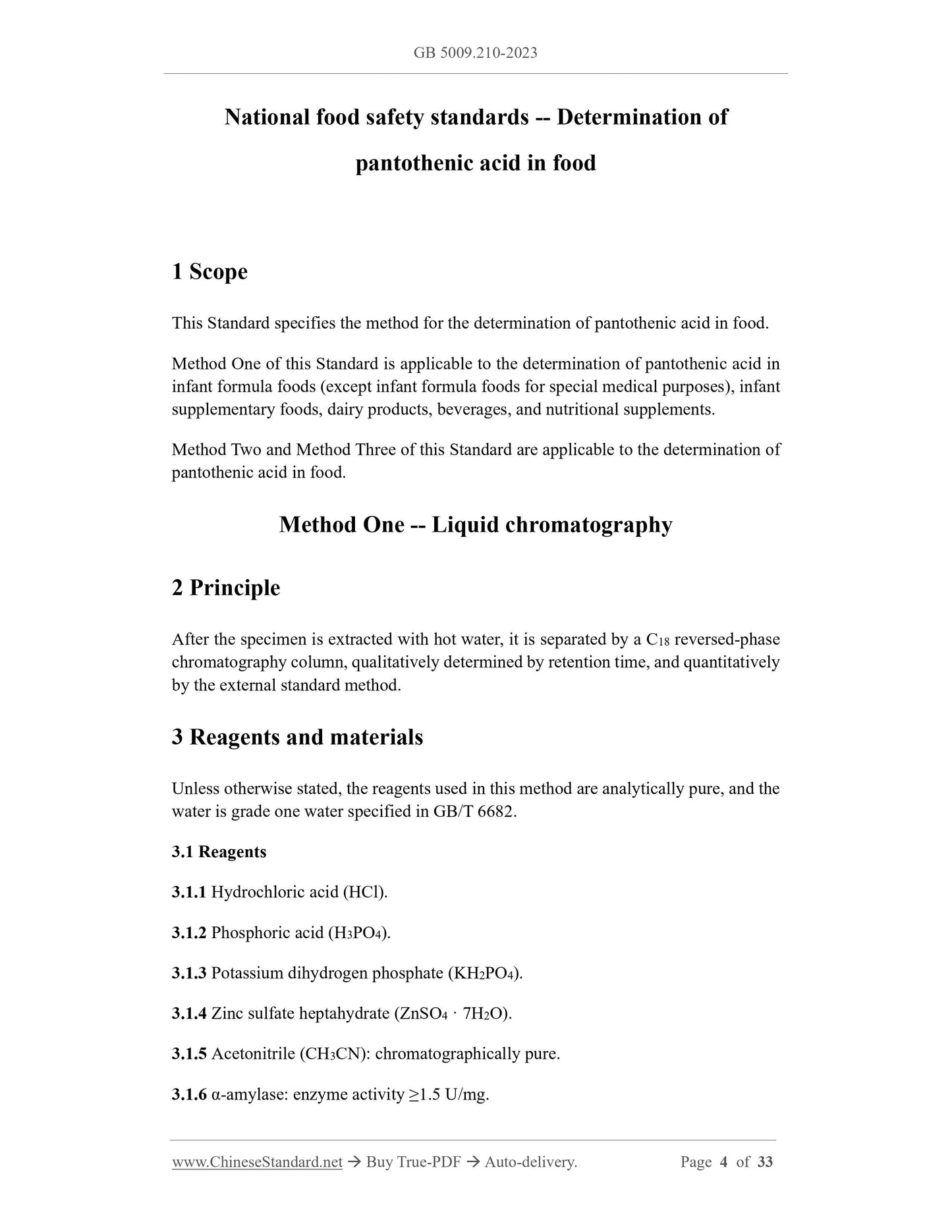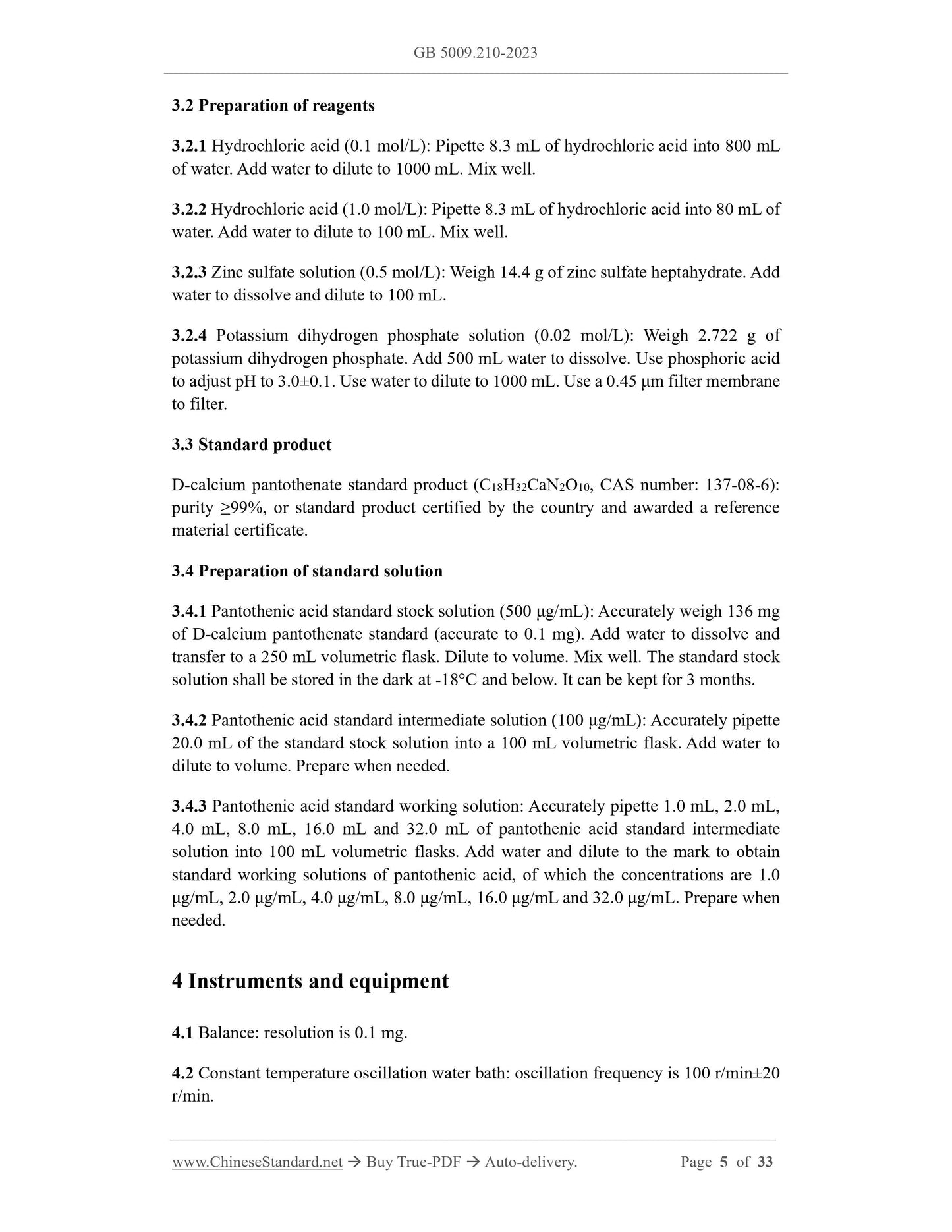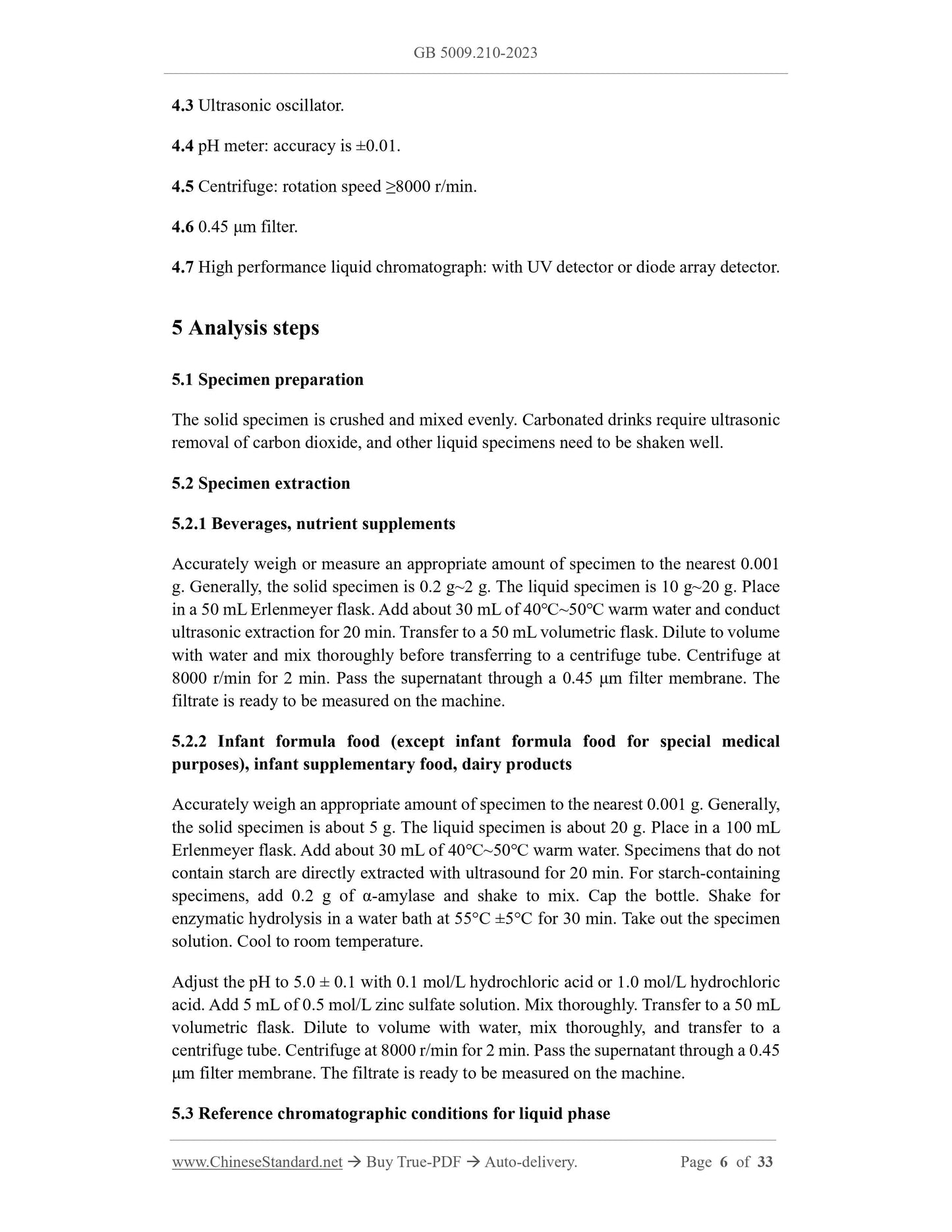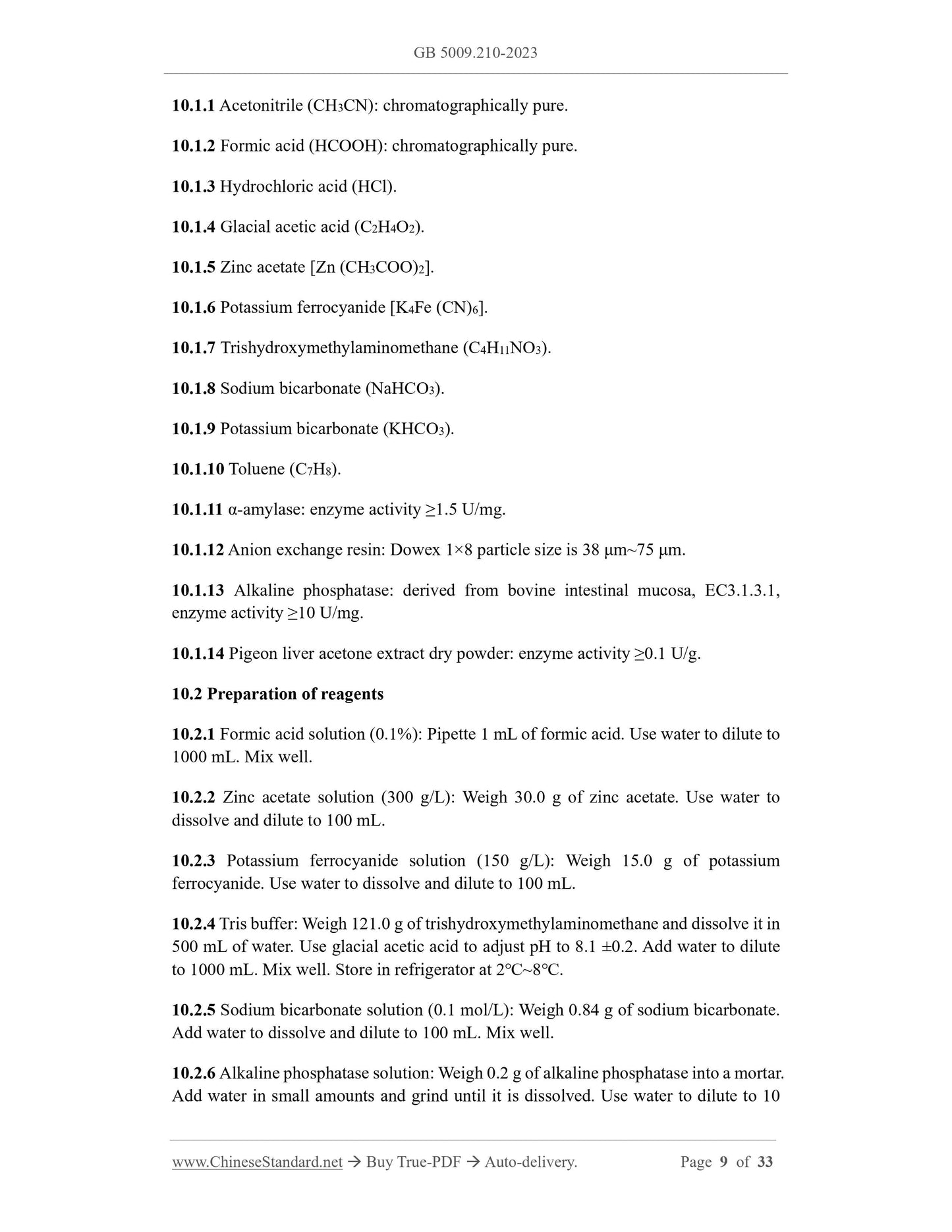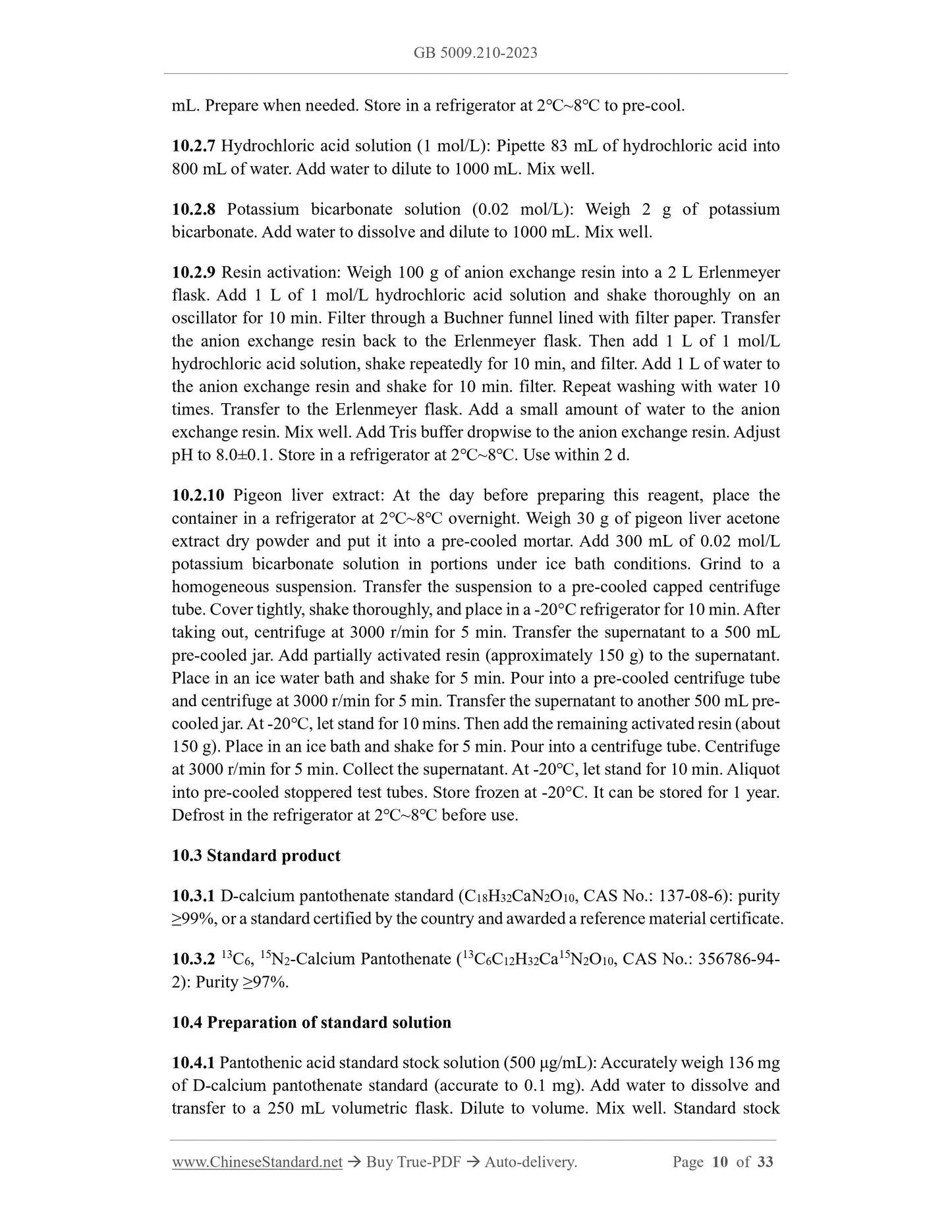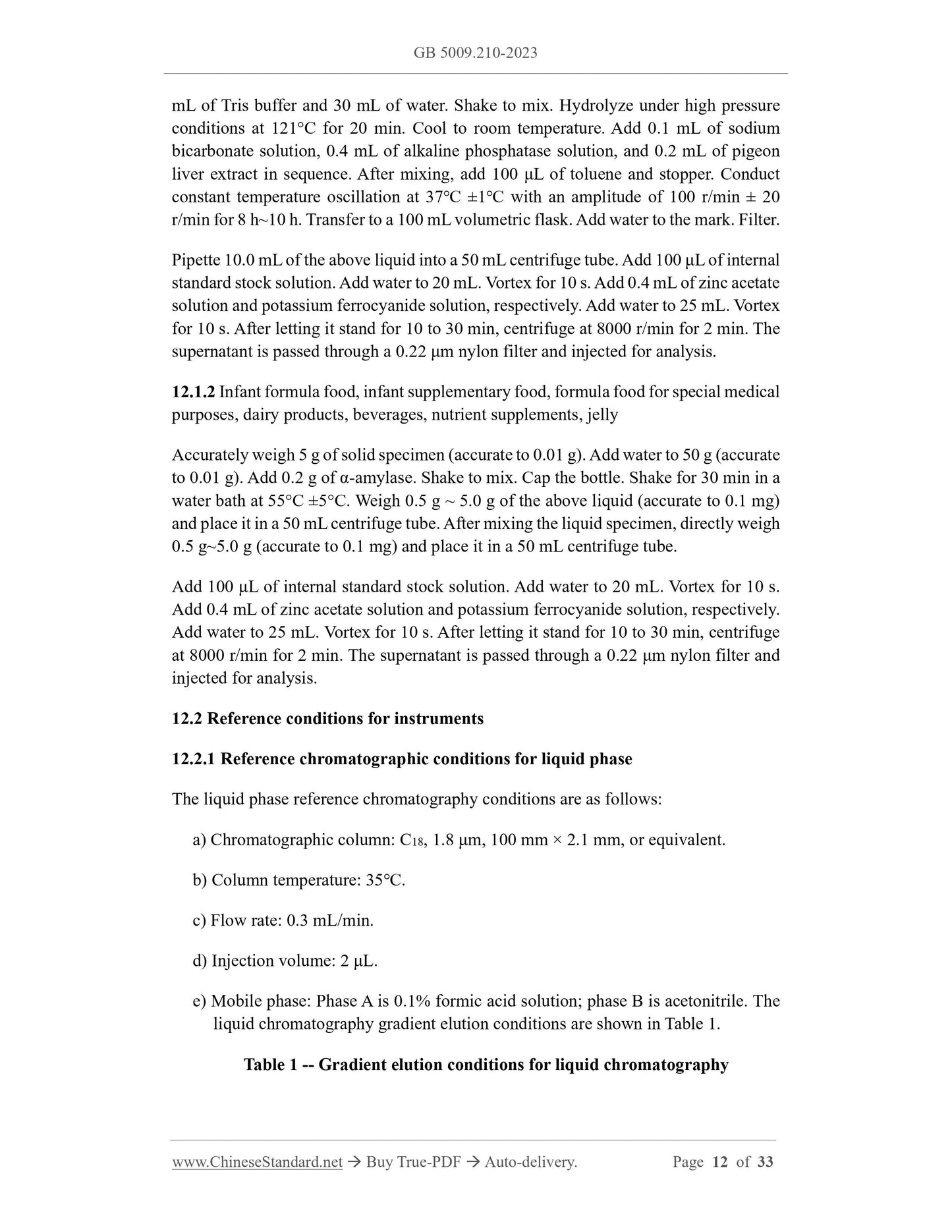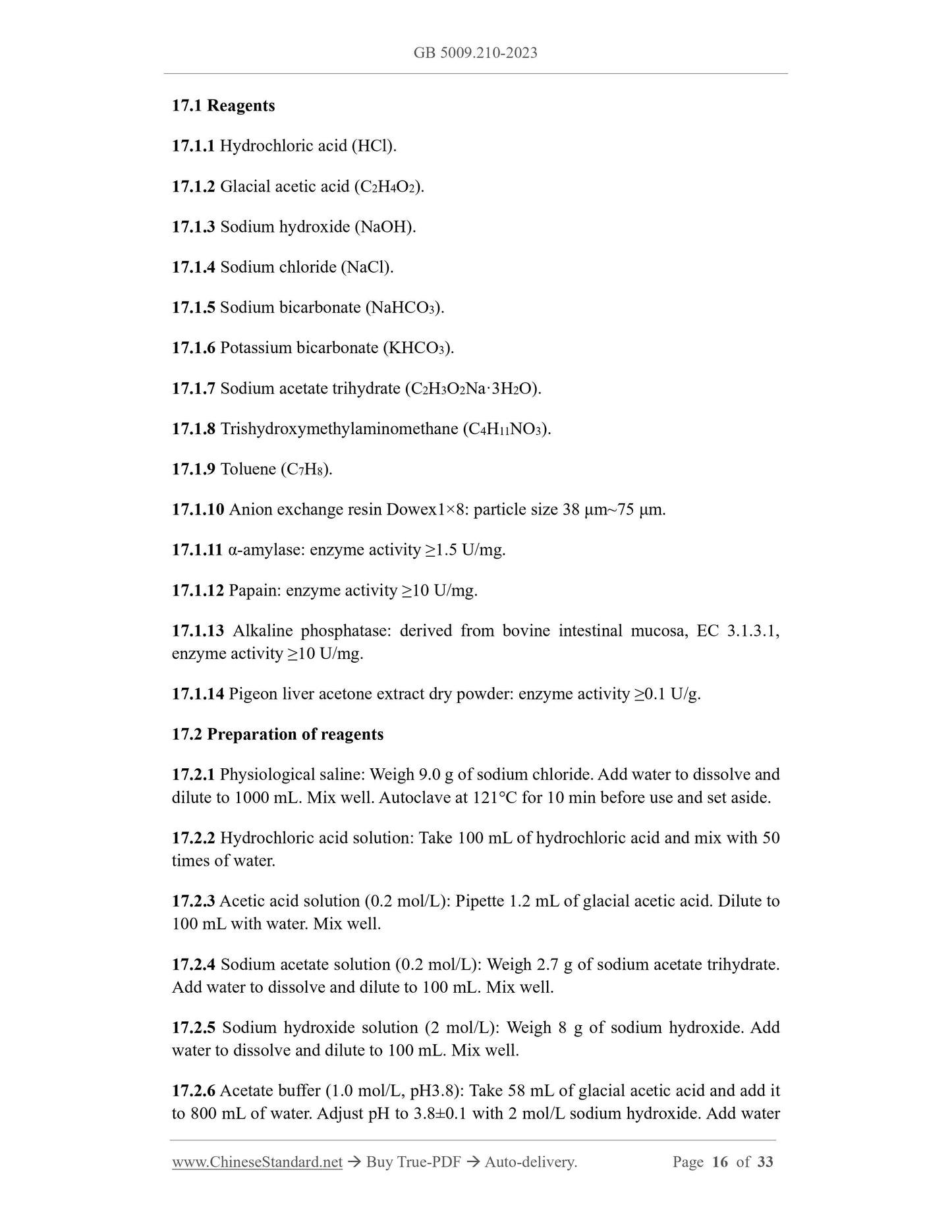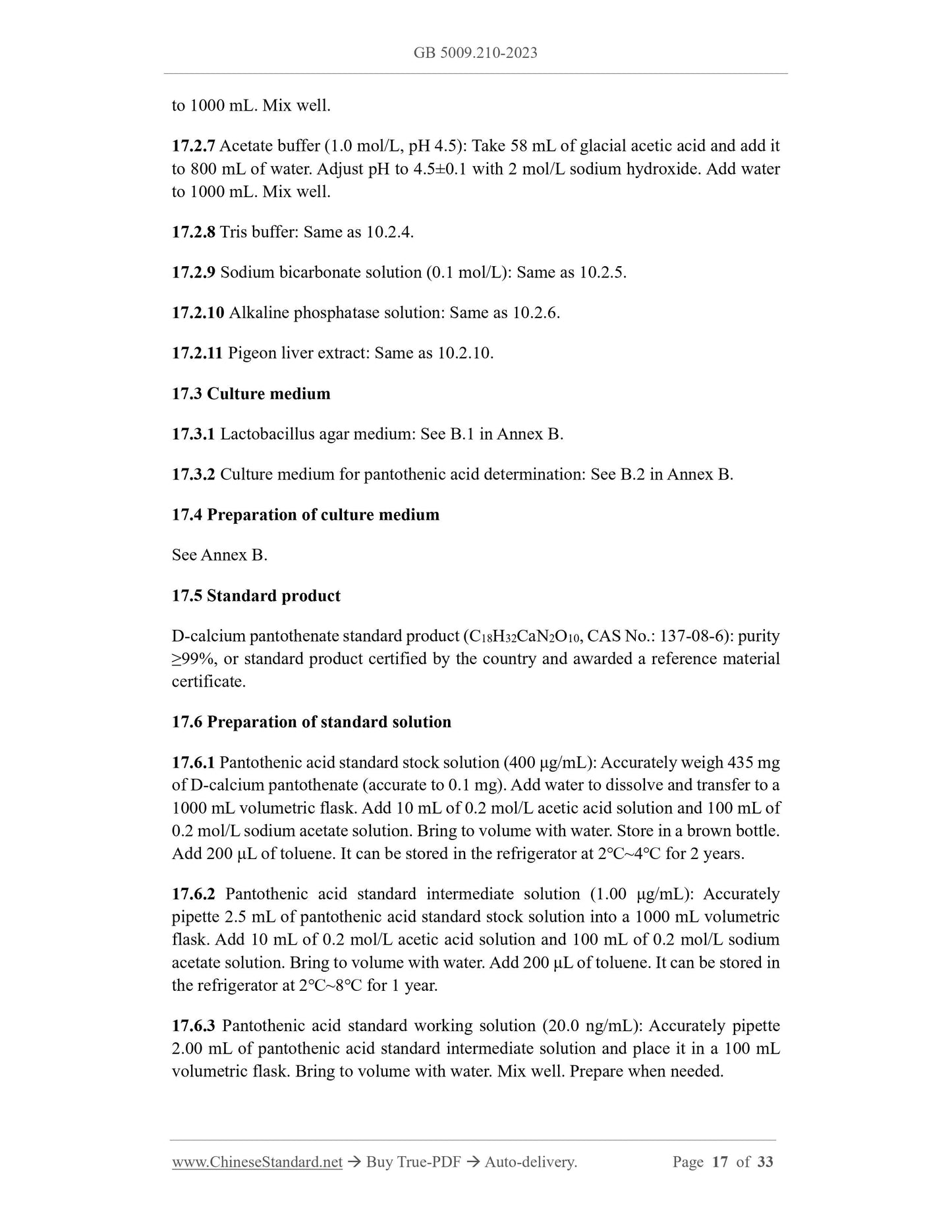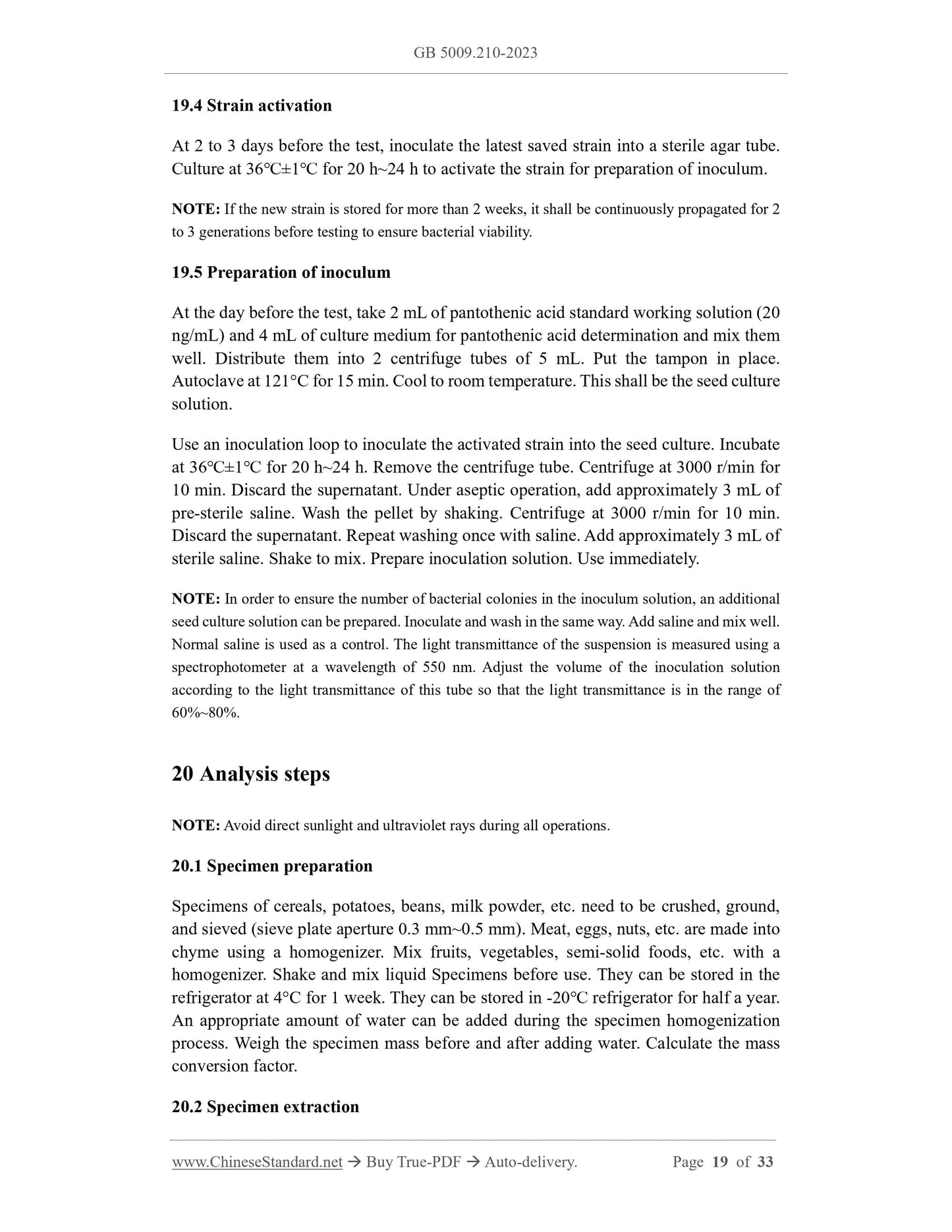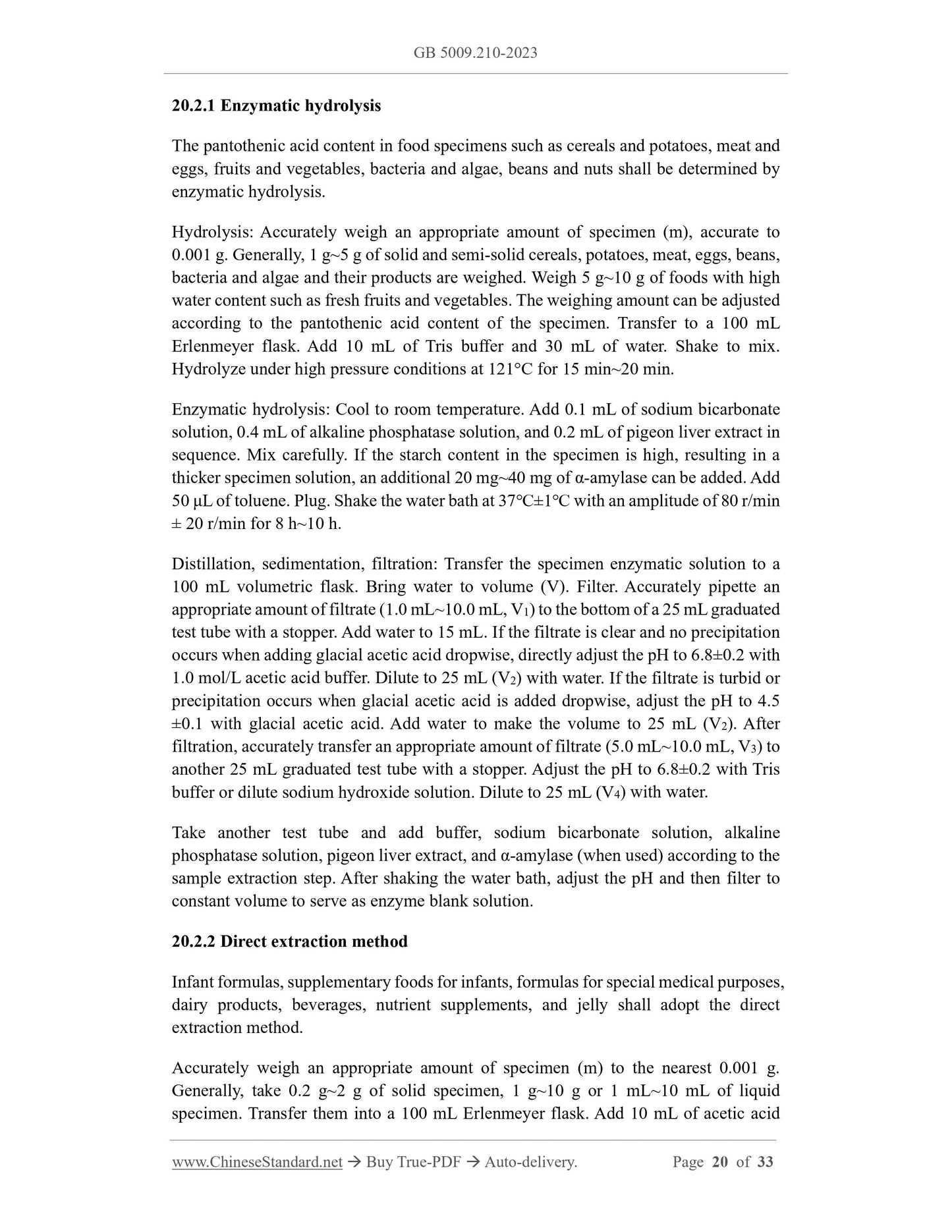1
/
of
12
www.ChineseStandard.us -- Field Test Asia Pte. Ltd.
GB 5009.210-2023 English PDF
GB 5009.210-2023 English PDF
Regular price
$335.00
Regular price
Sale price
$335.00
Unit price
/
per
Shipping calculated at checkout.
Couldn't load pickup availability
GB 5009.210-2023: National food safety standard - Determination of pantothenic acid in foods
Delivery: 9 seconds. Download (and Email) true-PDF + Invoice.Get Quotation: Click GB 5009.210-2023 (Self-service in 1-minute)
Newer / historical versions: GB 5009.210-2023
Preview True-PDF
Scope
This Standard specifies the method for the determination of pantothenic acid in food.Method One of this Standard is applicable to the determination of pantothenic acid in
infant formula foods (except infant formula foods for special medical purposes), infant
supplementary foods, dairy products, beverages, and nutritional supplements.
Method Two and Method Three of this Standard are applicable to the determination of
pantothenic acid in food.
Method One -- Liquid chromatography
Basic Data
| Standard ID | GB 5009.210-2023 (GB5009.210-2023) |
| Description (Translated English) | National food safety standard - Determination of fumonisin in foods |
| Sector / Industry | National Standard |
| Classification of Chinese Standard | X09 |
| Word Count Estimation | 22,237 |
| Date of Issue | 2023-09-06 |
| Date of Implementation | 2024-03-06 |
| Issuing agency(ies) | National Health Commission of the People's Republic of China, State Administration for Market Regulation |
| Summary | This standard specifies the immunoaffinity column purification-post-column derivatization high-performance liquid chromatography, high-performance liquid chromatography-tandem mass spectrometry, and immunoaffinity column purification-pre-column derivatization high-performance liquid chromatography methods for fumonisin in food. This standard applies to fumonisin B in cereals and their products, cereal supplementary foods for infants and young children, and vegetable oils and fats. , fumonisin B2, fumonisin B2 (hereinafter referred to as FB1, FB2, FB3) determination. |
Share
